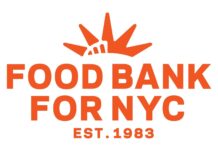SILVER SPRING, Maryland, Sept. 8, 2020 /PRNewswire-HISPANIC PR WIRE/ — Did you know more than one-third of all available food in the U.S. goes uneaten through loss or waste? That means Americans are throwing out about 133 billion pounds of uneaten food each year. To help you stretch your food dollars, understand date labels, and reduce food waste, the U.S. Food and Drug Administration (FDA) is sharing the following tips and resources:
At the Grocery Store
- When shopping for food, make a shopping list before going to the grocery store. When at the store, buy only what you need and stick to your shopping list. Be mindful of items that have a limited shelf life.
- Purchase “imperfect” fruits or vegetables, which often get left behind at the grocery store because of physical imperfections, but are not damaged or rotten.
In the Kitchen: Storage and Prep
- Check the temperature setting of your fridge. Keep the temperature at 40° F or below to keep foods safe. The temperature of your freezer should be 0° F.
- Use the FoodKeeper App for information on how to safely store different foods to maintain freshness and quality.
- Use your freezer! Freezing is a great way to store most foods to maintain their quality until you are ready to eat them. Freeze in portions, label, and keep it airtight. Blanch fruits and vegetables before freezing, and defrost all foods safely.
- Become familiar with the date labels that appear on packaged foods. These dates are the manufacturers’ estimate of when the food will be at its best quality and flavor and if stored properly before and after opening, most foods will still be good to eat even after the quality-based date label on the package has passed. However, if a food shows signs of spoilage like change in color, consistency, or texture, or smells bad, you should throw it out.
At Home and in Your Community: Cooking and Donating Food
- Use “imperfect” fruits or vegetables to whip up healthy smoothies and soups for your friends or family. No one will notice the difference!
- Be creative and have fun. Create new dishes and snacks with leftovers and items you think may spoil soon. Have a cook-off to find out who can come up with the best dish.
- Reach out to local food banks, food rescue organizations, pantries, and shelters to donate extra food you have available.
But that’s not all you can do! Check out these FDA resources to learn:
- More tips for reducing food waste
- What you should know about date labels
- How to cut food waste and maintain food safety
- The impact of food waste and how to use imperfect produce
Contact: Media: 1-301-796-4540 Consumers: 1-888-SAFEFOOD (toll free)

Video – https://www.youtube.com/watch?v=A93n1736qUc
Logo – https://mma.prnewswire.com/media/585467/ucm519149_Logo.jpg
SOURCE U.S. Food and Drug Administration







